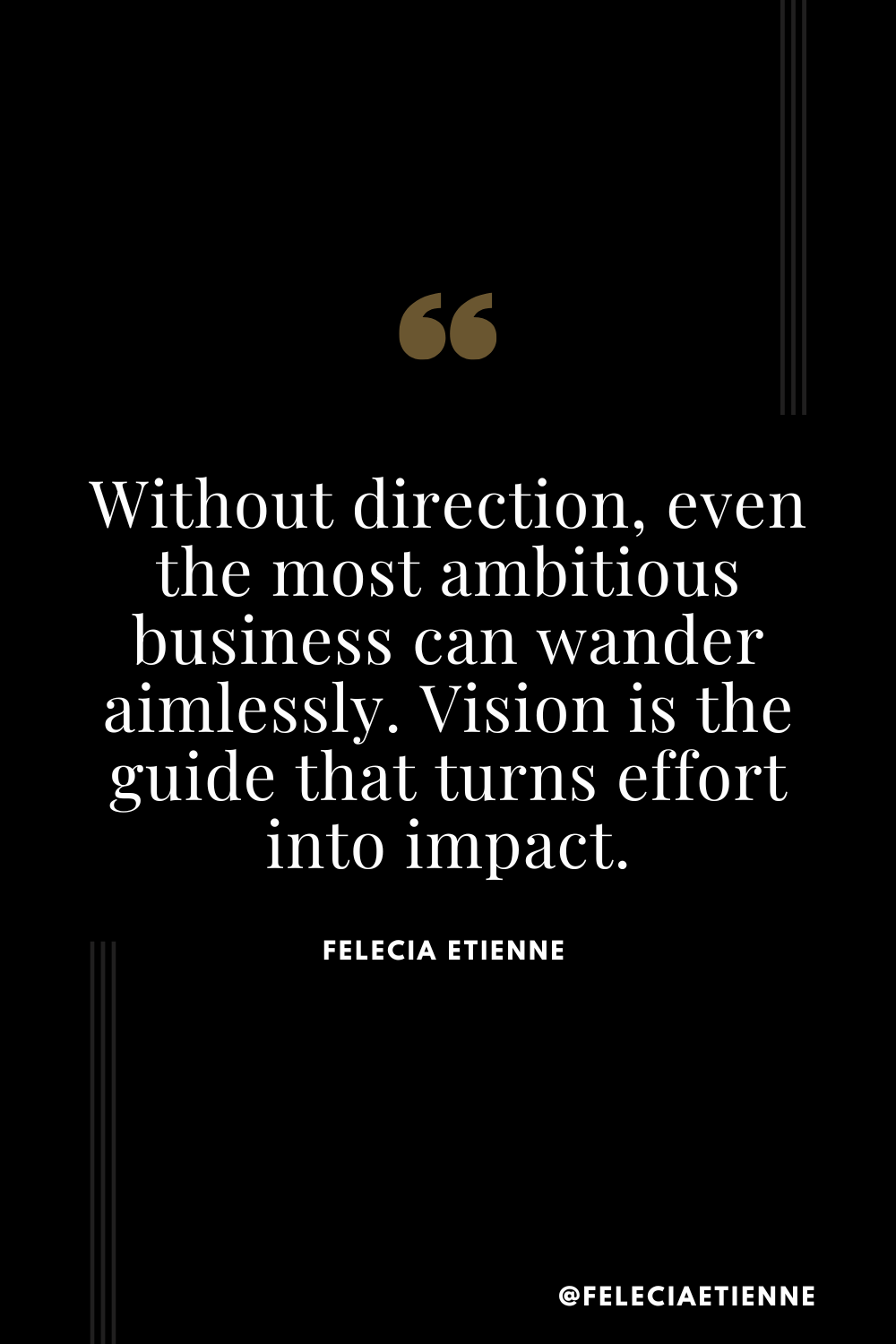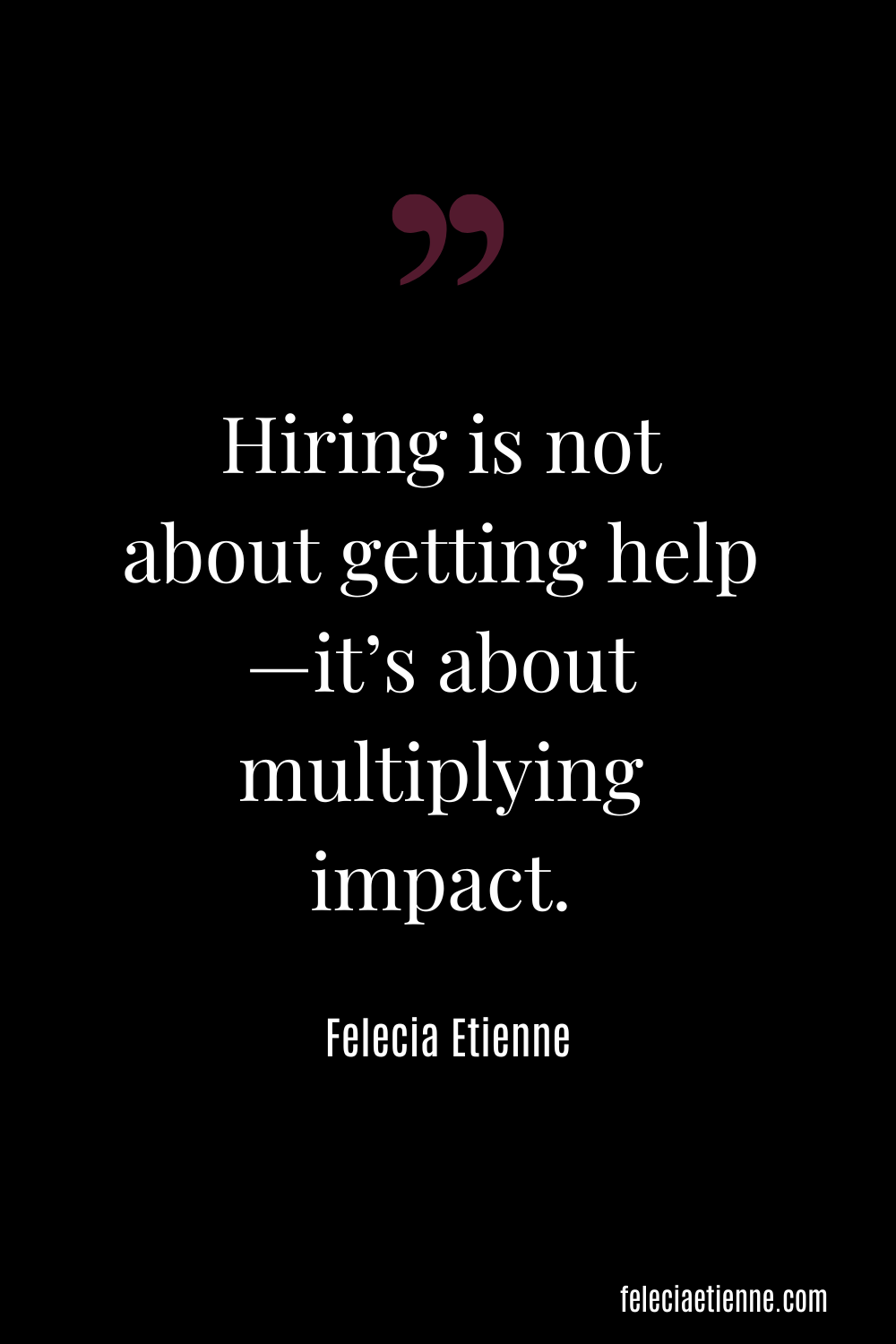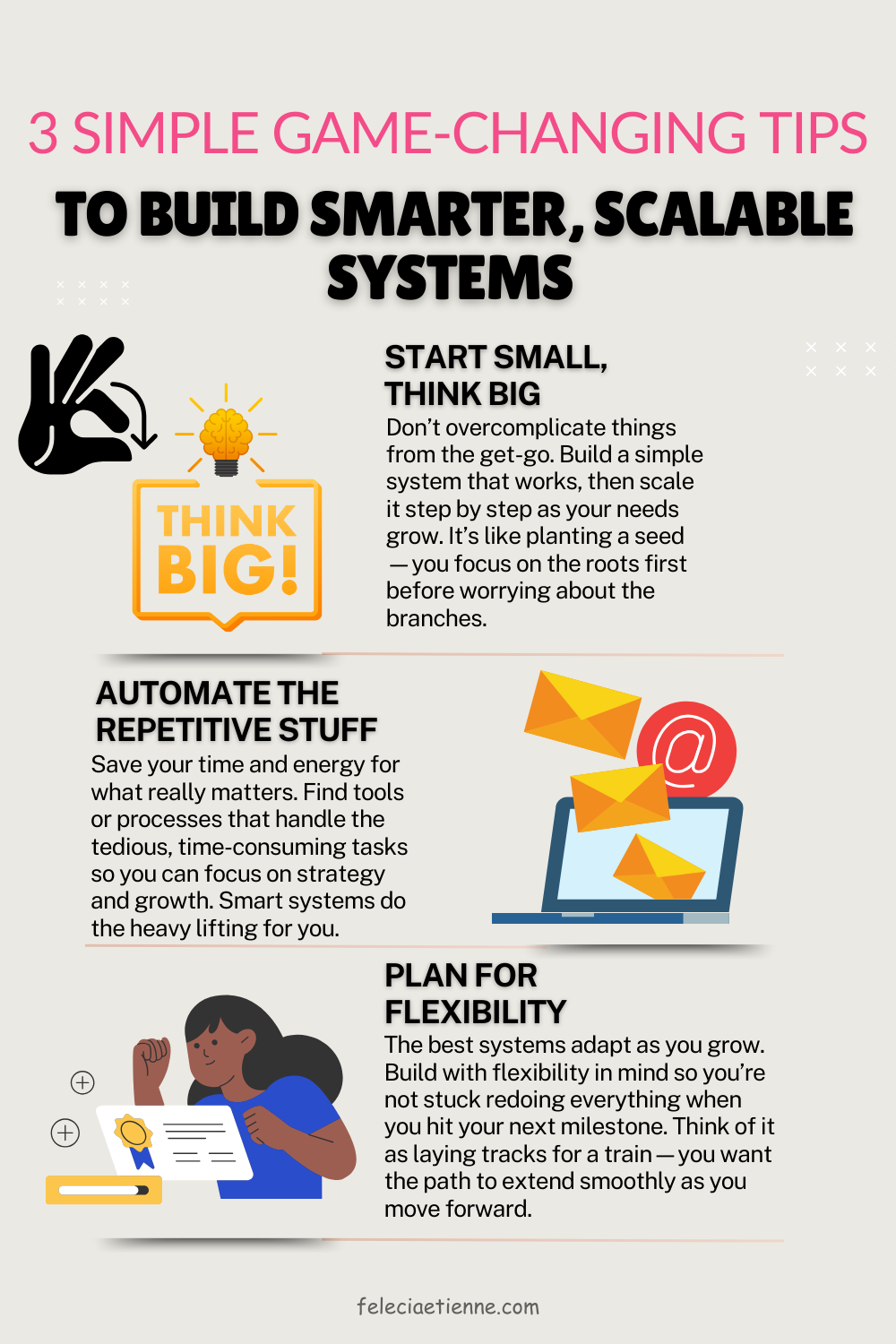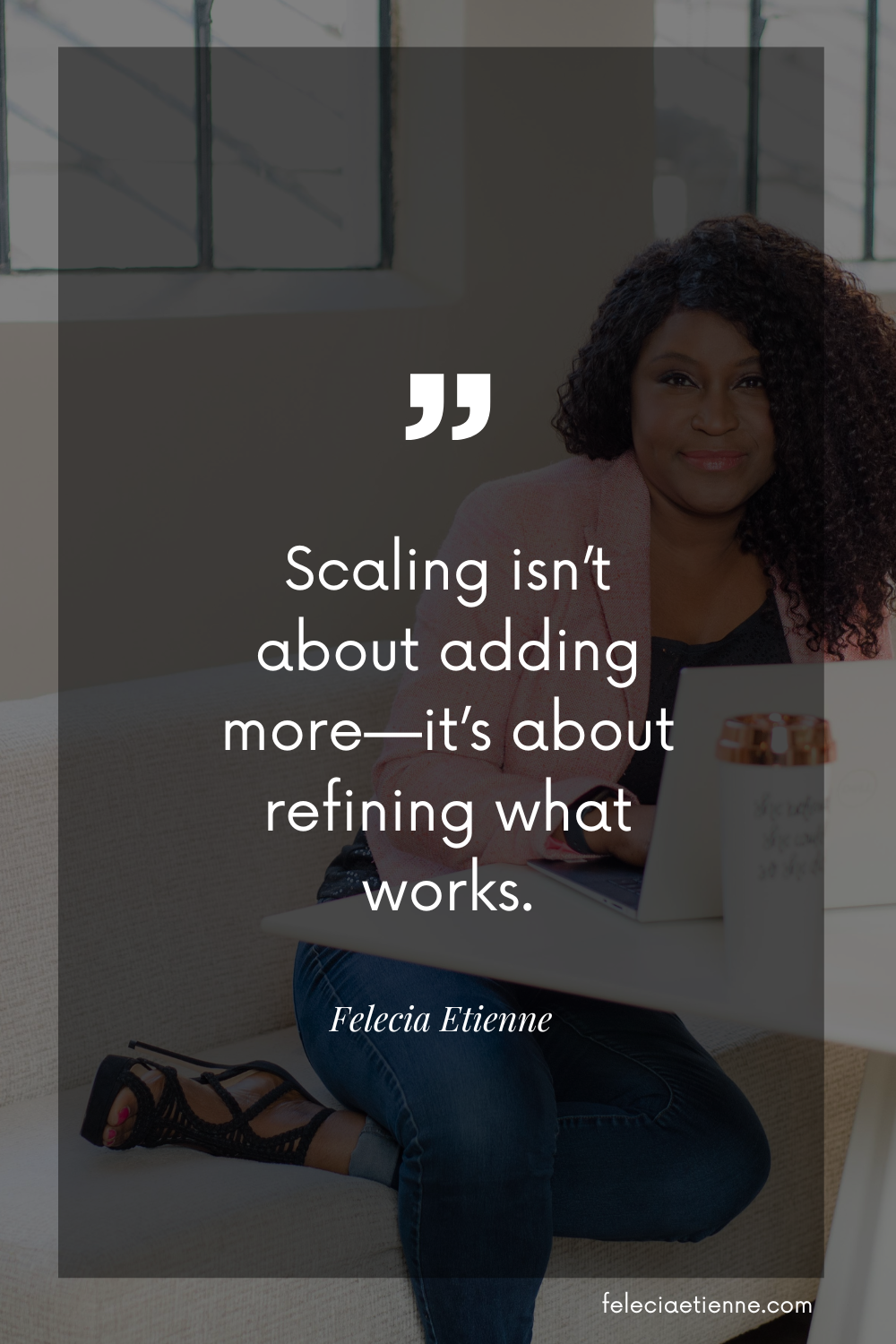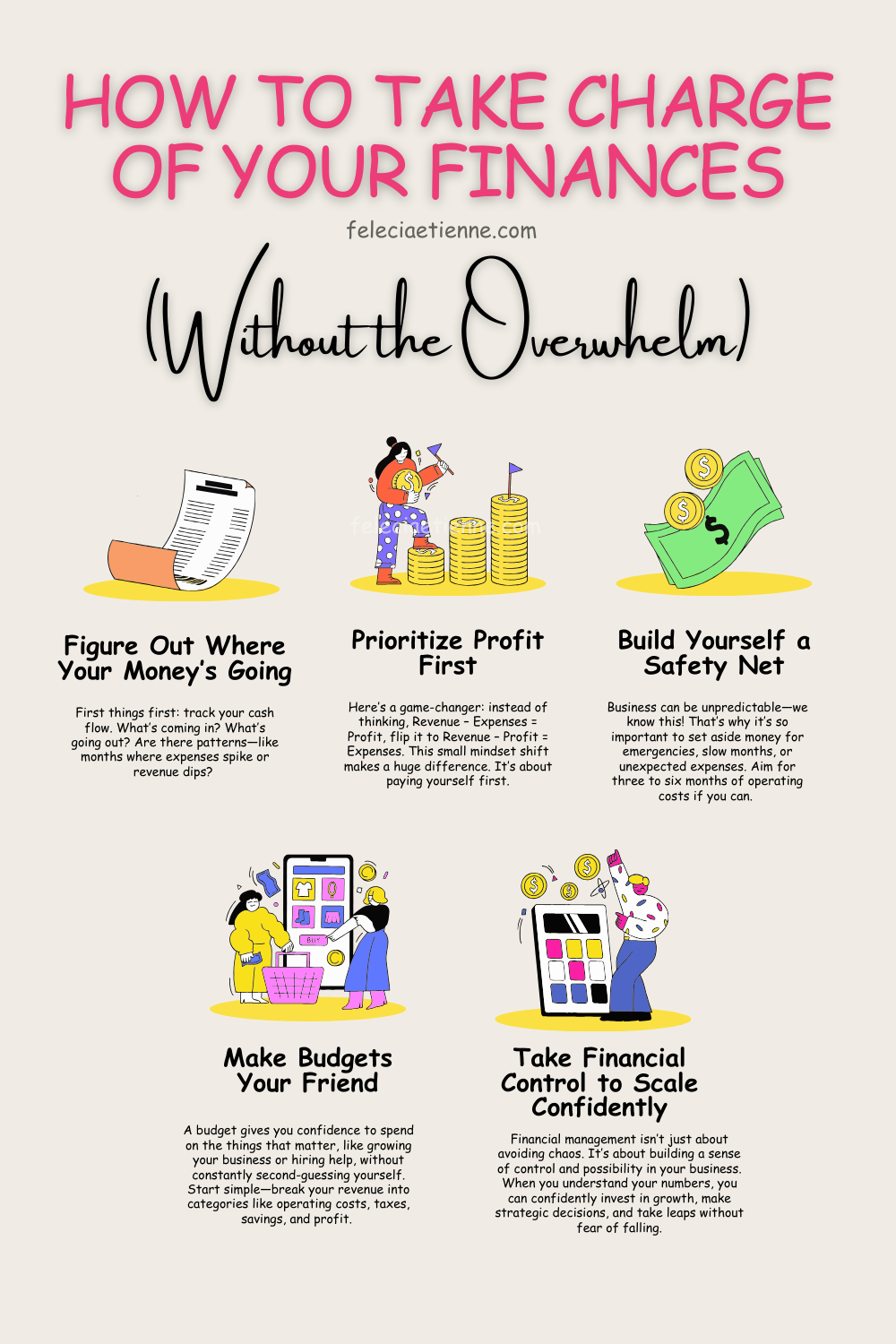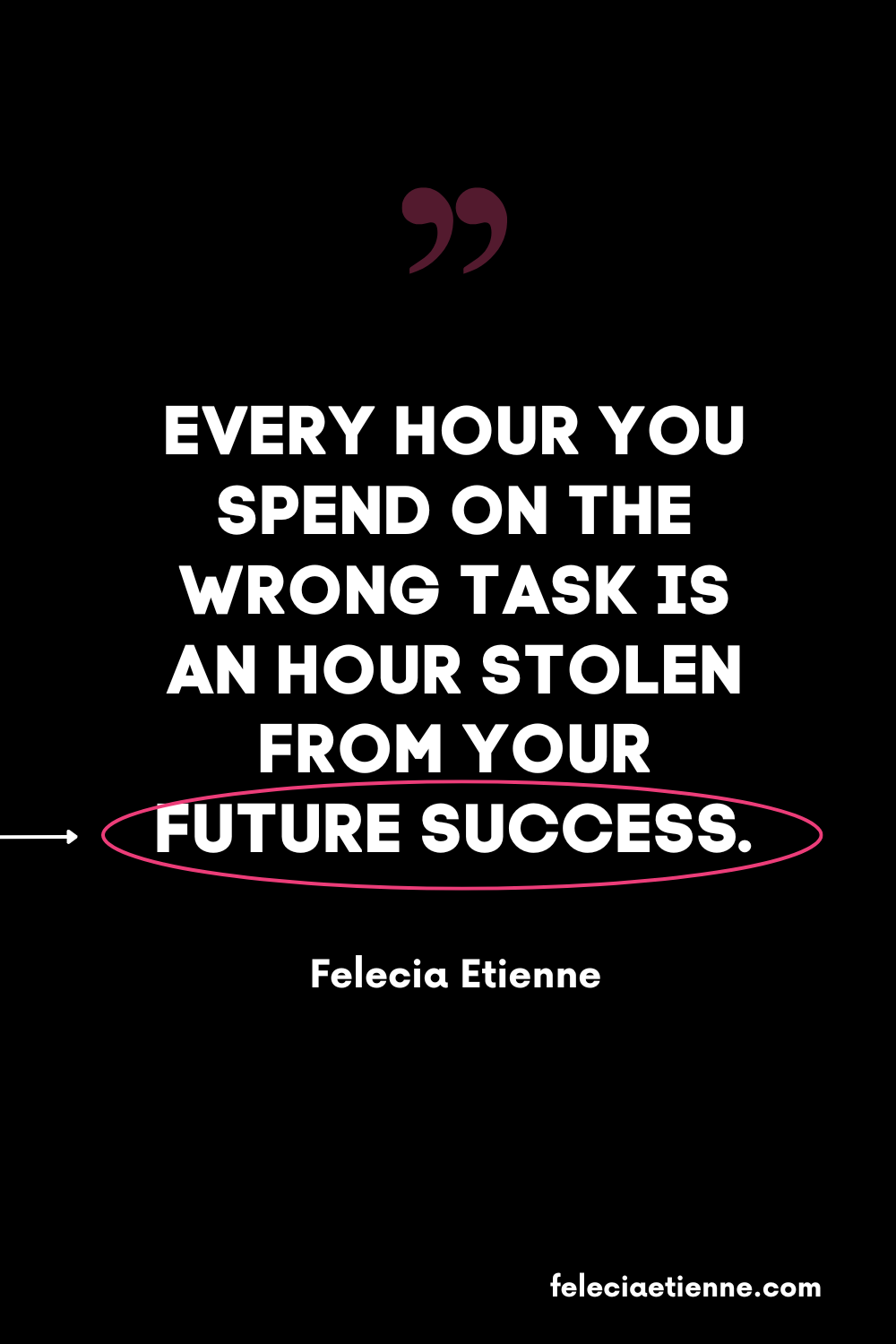The 7 Biggest Scaling Mistakes Entrepreneurs Make (And How to Avoid Them Like a Pro)
Running a business can feel like an emotional rollercoaster—one day, everything’s clicking, and the next, you’re wondering if you’ll ever get unstuck. For entrepreneurs, solopreneurs, or professionals, scaling is one of the most exciting and nerve-wracking challenges. On one hand, it’s a chance to grow, unlock new opportunities, and boost your income. On the other, it can feel like a puzzle with too many pieces—where do you focus, how do you make the right moves, and how do you avoid tripping yourself up along the way?
Scaling isn’t about working around the clock or piling even more onto your to-do list. It’s about stepping back, recognizing what’s working, and creating systems that allow your business to grow without burning you out. Easier said than done, right? The truth is, even the most seasoned entrepreneurs stumble during this phase. But recognizing the common pitfalls is the first step to building a path forward—and making real progress.
Scaling your business isn’t without its challenges, but here’s the thing—it doesn’t have to feel overwhelming. The more you understand the hurdles that come with growth, the better prepared you’ll be to navigate around them. Whether you’re just starting to explore growth opportunities or already dealing with a few setbacks, knowing what to expect can save you time, money, and a lot of frustration. You don’t have to figure it all out alone—that’s what this blog is here for.
In this post, we’re diving into the seven most common mistakes solopreneurs make when scaling, breaking down why they happen, and, most importantly, how you can sidestep them. Recognizing these issues early gives you a clear path to grow your business with confidence while staying true to the vision that inspired you to start.
Let’s get into it.
1. No Clear Strategic Vision
“Without direction, even the most ambitious business can wander aimlessly. Vision is the guide that turns effort into impact.”
You’re managing everything—client work, cash flow, social media. It’s a lot. Some days, it feels like no matter how much you hustle, you’re stuck in the same place. Busy, but not really moving forward. Sound familiar?
Here’s the thing: without a clear direction for your business, all those daily tasks can start to feel like a grind. Like driving without a destination—you’re going, but are you actually getting anywhere?
Growing your business isn’t about doing more. It’s about doing what matters most. A solid vision gives you focus. It helps you prioritize your time and energy, so you’re not constantly putting out fires. Because let’s face it—running on fumes isn’t sustainable. You didn’t start your business just to get by. You started it to thrive.
Related article: Achieving Sustainable Success by Cultivating Self-Compassion
Why a Strategic Vision is Essential for Growth
When you’re running a business without a clear vision, it’s easy to slip into autopilot. You start saying yes to every opportunity, even when it doesn’t align with what you truly want. You spend time and money on things that don’t move your business forward. Before you know it, you’re stuck in an exhausting cycle of staying busy without actually growing.
A solid vision changes everything. It gives you focus, helps you prioritize what matters most, and frees you from distractions that pull you off course. And when things get chaotic (because they will), that vision becomes your anchor, keeping you steady and on track.
Are You Stuck in Reactive Mode?
Here’s a scenario: A solopreneur was pulling late nights answering emails, juggling endless client requests, and reworking projects to keep everyone happy. They felt like they were being productive, but the truth? Their revenue wasn’t growing, and they were burning out. Why? They were reacting to everything instead of steering their business toward intentional growth.
The turning point came when they got clear on their bigger vision. They chose to focus only on high-value clients who aligned with their goals. The result? Less stress, more focus, and doubled revenue.
If you’re constantly putting out fires instead of making progress, it’s time to shift. Reactive mode will drain you. Without a clear direction, it’s easy to lose time, energy, and momentum.
Start Defining Your Vision Today
Ask yourself: What do I actually want my business to look like? Picture it a year from now, then three years, and even five. Be specific:
Are you aiming for a revenue target?
Do you want more free time to spend with family or on hobbies?
Do you see yourself building a team or expanding into new markets?
Once you’ve outlined your goals, break them into smaller pieces. For example, if your vision is to go from solopreneur to team leader, start by pinpointing tasks you can delegate and researching tools to streamline workflows. Big goals feel manageable when they’re broken into steps.
Make It Happen
Your vision doesn’t have to be perfect—just actionable. Use it as a filter to evaluate decisions and opportunities. Revisit it regularly, and don’t be afraid to adjust as your business grows and evolves.
Take 15 minutes today to write down where you want to be a year from now. Don’t overthink it—just get your ideas on paper. That clarity is the first step toward shifting from working in circles to making intentional, meaningful progress.
When you have a clear vision, growth isn’t a distant hope—it’s inevitable. You’ll stop spinning your wheels and start building something that truly aligns with your goals. That’s how you go from just keeping up to thriving as an entrepreneur.
Related article: Embodying the Next Level You: The Game-Changing Mindset Shifts for Achieving Your Vision
2. Hiring Without a Plan
“Hiring is not about getting help—it’s about multiplying impact.”
Hiring your first employee—or even a contractor—feels like a major win, especially when you’re buried in tasks. But hiring out of panic? That’s a recipe for frustration. Desperate hires often lead to mismatched skills, fuzzy expectations, and more headaches than help. Instead of solving problems, it can create new ones.
The solution? Thoughtful, strategic hiring. It's not just about handing off tasks—it’s about adding someone to your team who strengthens your business and aligns with your goals for the long haul.
Why Rushed Hiring Sets You Back
When you’re overwhelmed, it’s tempting to skip the prep work. You might hire without fully understanding the role you need or the skills required.
This can lead to:
Spending too much time training someone who isn’t the right fit.
Realizing their skills don’t align with what your business actually needs.
Feeling like managing them adds to your workload instead of lightening it.
These mistakes drain time, energy, and money—resources better spent on growing your business. A rushed hire might feel like a quick fix, but it often derails progress instead.
Get Clear on What You Really Need
Start by figuring out what’s actually taking up your time. What are the tasks that constantly pull you away from the big-picture work?
For example:
Are you stuck scheduling social media posts?
Buried under a mountain of client emails?
Spending hours organizing invoices or spreadsheets?
Write down these draining tasks, group them into categories, and define the role that would tackle them. If you’re bogged down by client communication and invoicing, for example, you might need a virtual assistant with experience in customer service and basic bookkeeping.
Set Your Hire Up for a Smooth Start
Even if you’re running a small operation, giving your new hire some structure will make everyone’s life easier.
A little preparation goes a long way:
Create a short walkthrough or guide for recurring tasks (e.g., how to manage emails or schedule posts).
Clearly outline your expectations—what does success look like in this role?
Introduce the tools they’ll be using (e.g., Canva, QuickBooks) and share quick tutorials if needed.
This upfront effort reduces confusion and endless back-and-forth questions, allowing your hire to hit the ground running.
Think Beyond the Immediate Need
Don’t just hire to solve today’s problem—look ahead. Where do you want your business to be in a year or two? Can this new team member grow with you?
For instance, a virtual assistant who starts by managing your inbox could eventually take on more operational responsibilities, evolving into a key part of your team as your business scales. Hiring with growth in mind ensures your investment pays off over time.
Real-World Example
Take the story of a designer juggling client communication, project deadlines, and creative work. She brought on a virtual assistant to handle emails and scheduling, freeing up 10 hours a week. With that extra time, she focused on creative projects that brought in new clients, helping her grow the business.
That hire wasn’t just about easing the workload—it was about unlocking new opportunities.
Start Small, but Start Now
Think about one task that’s draining your energy and keeping you from the work that truly matters. Write it down. Identify the skills needed to take it off your plate. Then, take the first step toward hiring intentionally.
You don’t need perfection—you just need progress. With a clear plan and a thoughtful approach, you’re not simply finding help. You’re building a team that strengthens your business and sets you up for sustainable growth. And that’s how you create a foundation for long-term success.
Related article: Beat the Busyness Trap: 13 Simple Strategies for Sustainable Success
3. Lack of Scalable Systems
“If your business can’t run without you for a day, you don’t have a business—you have a job.”
Running a business without scalable systems is a fast track to exhaustion. If you’re the one answering every email, tracking every deadline, and handling every task yourself, you haven’t built a business—you’ve built a non-stop job. And when your to-do list is constantly overflowing, there’s no room left to focus on growing or improving your business.
Scalable systems are what keep a business running smoothly as it grows. They bring structure to the chaos, free up your time and mental bandwidth, and ensure things keep moving—even when you’re not there to oversee every detail.
Why Businesses Hit a Wall Without Systems
When you’re doing everything yourself, it’s easy to rely on memory or quick fixes to make it through the day. At first, juggling invoices, client emails, and project deadlines might seem manageable. But as your business grows, the cracks inevitably start to show. Deadlines get missed, clients get frustrated, and opportunities slip through the cracks—all because everything depends on you. Scaling becomes impossible when your workload keeps you tied up in the day-to-day.
And here’s the hard truth: without systems, it’s nearly impossible to take control of your time. You end up stuck in the same repetitive tasks instead of focusing on the big picture—like expanding your reach or building something truly impactful.
How to Start Building Scalable Systems
The good news? You don’t have to change everything all at once. Start small. Look at the repetitive tasks that always seem to drain your time and energy—those are the perfect candidates for automation.
Think about it:
Social media scheduling: Tools like Plann, Buffer, or Hootsuite can handle posts for you on autopilot.
Email follow-ups: Save hours by using pre-written templates or email automation tools.
Client onboarding: Use platforms like FG Funnels, Asana, or even a simple checklist to make the process smoother.
Once you’ve identified these tasks, document how you’re currently doing them by creating Standard Operating Procedures (SOPs). Don’t overthink it—even a simple step-by-step guide can work. For example, writing down your invoicing process can make it easier to hand off to someone else later.
Tools to Simplify Your Workflow
You don’t need a big budget to improve how you work. Plenty of affordable tools can help you stay organized and save time:
Trello, Asana, or ClickUp for managing tasks and projects.
Zapier for connecting apps and automating workflows.
Google Workspace for easy document sharing and communication.
These aren’t just for big companies—they’re perfect for solo entrepreneurs who are ready to run things more smoothly without juggling scattered to-do lists.
Why Building Systems Matters
When your systems are dialed in, your business doesn’t just run—it thrives. You’ll have more time to focus on the things that drive growth, like refining your vision, nurturing relationships, or brainstorming your next big idea. And here’s the real win: solid systems mean your business can keep running even if you step away. Want to take a day off or finally book that vacation? With the right processes in place, that’s entirely within reach.
Start with One Step
You don’t have to tackle everything today. Pick one small process—whether that’s automating your social media or organizing your client onboarding—and work on it. Small, consistent changes build the foundation for long-term success.
Keep it simple. Focus on what saves you time and reduces chaos. And as you make these changes, you’ll find yourself with more space to grow your business and enjoy the journey along the way. You’ve got this!
4. Shiny Object Syndrome (Overexpanding Too Soon)
“Scaling isn’t about adding more—it’s about refining what works.”
When you’re running a business, every new idea feels full of possibility—a new product, a little tweak to a service, or even that course you’ve been dreaming about launching. It’s exciting, right? But here’s the thing: chasing too many ideas at once can pull your focus, drain your energy, and leave your audience confused. When this happens, the things that are already working for your business take a back seat. This is where shiny object syndrome sneaks in and slows your growth.
Why Shiny Object Syndrome Holds You Back
Jumping on every new idea creates a scattered business. Instead of building momentum with what’s already working, you’re constantly shifting gears, which leaves little room for mastery.
Here’s what that looks like:
Unfocused Effort: You’re brainstorming a new product, but your current offers still need fine-tuning—or even a solid marketing plan.
Halfhearted Results: Splitting your time means no single idea gets the care and attention it needs to succeed.
Overloaded Systems: Piling on new projects without streamlining operations creates chaos instead of progress.
When you’re stretched too thin, your business loses its rhythm. Imagine trying to launch an entirely new service while still fixing inefficiencies in your current operations. It’s not sustainable—and it’s definitely not the way to scale. Growth isn’t about doing more. It’s about doing more of what’s already working.
Scaling Without the Chaos
Scaling takes strategy. Before chasing the next big idea, focus on optimizing what’s already driving results.
Here’s how to do it:
Focus on Your Top Performer:
What’s your best-selling product or service? Double down on it. If your online course is a hit, refine it. Update the content, improve the user experience, or add bonuses to make it even better. Nail what’s working before moving on to the next thing.
Serve Your Audience Better:
Instead of creating something for a brand-new audience, dig deeper into the one you already have. Look for ways to meet their needs more effectively. It could be as simple as offering better resources, creating a loyalty program, or adding a personal touch to your communication.
Streamline Your Processes:
A cluttered business can’t grow. Focus on simplifying and strengthening your systems. This might mean automating repetitive tasks, improving your onboarding process, or creating clear standard operating procedures so your team (or future team) has a roadmap to follow.
Scaling isn’t about running in ten different directions—it’s about creating a solid foundation so growth feels natural, not overwhelming.
A Real-Life Example of Scaling Smart
One client of mine ran a handmade jewelry business that was thriving. Her signature pieces were selling out, and customers loved her designs. But then she decided to add a completely new product line—custom leather bags. Between sourcing materials and figuring out a new production process, her marketing for the jewelry started slipping. Sales dropped, and her business felt chaotic.
She pressed pause on the leather bags and went back to perfecting her jewelry line. By streamlining her production and focusing on customer experience, she regained her momentum. Later, with the profits from her jewelry line, she carefully reintroduced the leather bags—this time with a clear plan and systems in place.
Refinement, Not Expansion
Scaling isn’t about adding more layers to your business. It’s about refining what’s already working. Before you dive into your next idea, ask yourself, “Have I truly maximized the potential of what I already have?” Often, the fastest way to grow is by simplifying and improving—not by piling on more.
Your Next Step
Pick one product or service that’s currently performing well. What’s one improvement you could make to it? Could you enhance the customer experience, add an upsell, or make delivery smoother? Start with that.
Growth happens when you focus, refine, and build intentionally. By strengthening your foundation first, you’re not just preparing to scale—you’re setting yourself up to thrive.
Related article: Overcoming Self-Doubt: How to Sustain Success, Achieve Growth, and Avoid Burnout
5. Poor Financial Management
“If you don’t tell your money where to go, you’ll always wonder where it went.”
Money management isn’t exactly the most exciting part of running a business, but it’s absolutely essential—especially when you’re trying to grow. Yet, so many solopreneurs avoid dealing with their finances. If that sounds like you, you’re not alone. It’s easy to push it aside when everything seems to be running smoothly, but here's the thing: ignoring your numbers doesn’t make the problems disappear. When cash flow issues inevitably arise, they can hit hard. Stress builds up, decision-making gets clouded, and before you know it, you’re scrambling to cover bills or cutting corners that hurt your business in the long run.
Why Financial Clarity Matters
Think of your finances as the backbone of your business. Without a clear understanding of where your money is coming from, where it’s going, and what you need to reinvest for growth, you're building on shaky ground.
Neglecting this foundation can lead to:
Constant Stress: Without knowing your financial health, every unexpected cost feels like a crisis.
Bad Decisions: A lack of clarity means you’re more likely to accept work that doesn’t fit just to make ends meet.
Stalled Growth: Scaling requires planning and resources. Without the funds or strategy, those big goals stay out of reach.
The bottom line? If you’re not in control of your money, your money will take control of you. By prioritizing financial clarity, you set yourself up for smarter decisions, less stress, and a business that’s built to grow.
How to Take Control of Your Finances (Without the Stress)
Money can feel overwhelming, especially if budgeting and tracking expenses sound like a chore. But handling your finances isn’t about perfection or crunching numbers all day. It’s about building realistic habits that help you feel confident and in control. You don’t need to be a financial expert—you just need to start with a few small steps. Here’s how to begin:
Step 1: Understand Where Your Money Goes
Start by tracking your income and expenses. What’s coming in? What’s going out? Do you notice patterns, like months where spending spikes or revenue dips? You can use tools like QuickBooks, a simple app, or even good old-fashioned spreadsheets. The goal is clarity, not judgment. You’re simply gathering information to see the bigger picture. When you know what’s happening with your money, you can make smarter choices.
Step 2: Pay Yourself First
A simple shift in how you think about money can make all the difference. Instead of this formula:
Revenue – Expenses = Profit, flip it to:
Revenue – Profit = Expenses.
This approach ensures you’re setting aside money for things that matter—like savings, taxes, or reinvesting in your business—before covering everything else. Think of it as prioritizing your future self. It’s a proactive way to stay on top of your finances without feeling reactive or stretched thin.
Step 3: Create a Safety Net
Running a business has its ups and downs, which makes an emergency fund a must. Set aside three to six months of operating costs to cover unexpected expenses, slow seasons, or surprises. It’s not just about financial security—it’s about peace of mind. With a cushion in place, you’ll be able to handle whatever comes your way without scrambling.
Step 4: Build a Budget That Works for You
Budgets get a bad rap for being restrictive, but they’re actually empowering. A good budget gives you freedom—freedom to spend on what matters most while staying in control. Start by dividing your revenue into categories like operating costs, taxes, savings, and profit. Assign percentages to each category based on your priorities. It doesn’t have to be perfect, and you can always adjust as you go, but even a simple framework can make a big difference.
Let me share a quick story. A friend of mine runs a coaching business. She’s incredibly talented, but her finances? They were all over the place. She wasn’t tracking expenses, dipped into her business account for personal spending, and dreaded tax season every year. Then one day, she realized she couldn’t afford a marketing campaign she desperately needed to grow her business.
She decided to take control. First, she tracked her spending. Then, she started setting aside a small percentage for profit and taxes every month. Within six months, everything changed. She had savings, her taxes were covered, and she could even afford to hire a virtual assistant. Now her business is thriving, and she’s no longer stressed about money.
Take Charge and Thrive
Managing your finances isn’t just about keeping things organized. It’s about creating opportunities for growth. When you understand your numbers, you can make confident decisions, invest in your business, and take risks without fear.
Your First Step
Here’s a challenge to get you started: Take 30 minutes today to review your income and expenses from the past three months. Look for trends. Are there areas where you’re overspending or opportunities for growth you didn’t notice before? Then, set aside a small percentage of your next payment as profit. Even if it’s a tiny amount, the habit will build momentum and transform how you manage money.
If you don’t take control of your money, it will control you. Start small, get clear, and watch your confidence grow. Financial clarity is the foundation for a thriving, resilient business.
“Culture isn’t about team size—it’s about the energy you bring into your business daily.”
6. Ignoring Business Culture (Even as a Solopreneur)
“Business culture? That’s just for big companies, right?” It’s a common assumption, especially for solopreneurs or leaders of small teams. But here’s the thing: culture isn’t about the size of your business—it’s about how your business feels to everyone who interacts with it. Whether you realize it or not, your culture already exists. It’s in the way you approach your work, communicate with clients, and set expectations for future collaborations.
Even if you’re running a one-person show, your business culture shapes everything—from the energy behind your emails to the trust you build with clients or contractors. It’s the foundation for how your business operates and evolves.
Why Solopreneurs Should Care About Culture
Think of culture as the vibe people pick up when they work with you. Is it clear, focused, and inspired? Or does it feel disorganized and scattered?
Your culture shows up in ways you might not even notice, but here’s why it matters:
Attracting the Right Clients or Partners: When your values aren’t clear, you’re more likely to work with people who don’t align with your vision—leaving you frustrated or drained.
Navigating Growth Smoothly: Whether you’re hiring a team or simply outsourcing tasks, a lack of clear expectations can lead to confusion and missed opportunities.
Staying Energized, Not Overwhelmed: Without intentionality, it’s easy to slip into patterns that lead to stress or burnout, even when you love what you do.
The good news? Building a strong culture doesn’t take a big budget or a formal process. It starts with being mindful of how you operate—how you show up for yourself, your clients, and anyone else connected to your business. Small, intentional choices can set the tone for a business that feels aligned, energizing, and ready to grow.
Related article: Are You Sabotaging Your Relationships Without Even Realizing It? Here's How to Stop
Building a Positive Business Culture
Creating a business culture that feels right starts with understanding what truly matters to you. It doesn’t matter if you’re just getting started or already have a small team—your culture shapes everything from the way you work to the relationships you build. Here are a few ways to cultivate a culture that aligns with your values and helps you thrive:
1. Get Clear on Your Values
What do you care about most in how you work? Maybe it’s kindness, collaboration, or accountability. Whatever it is, take a moment to write down three to five values that resonate with you. These will become your true north. When you’re unsure about a decision or navigating a tough situation, these values will help ground you.
2. Set the Tone from the Start
Whether you’re bringing on a virtual assistant, a freelancer, or working with new clients, transparency is everything. Share what matters to you—your values, your expectations, your way of working. For example, if you value work-life balance, be upfront about boundaries around working hours. A little clarity early on can save a lot of frustration later.
3. Build Genuine Connections
Even if it’s just you and a freelancer right now, relationships matter. Check in regularly, celebrate wins (even small ones!), and show real interest in the people you work with. Something as simple as saying “thank you” or acknowledging a job well done can have a huge impact. When people feel valued, they’re more invested—and that energy becomes part of your culture.
4. Walk the Talk
Your business culture starts with you. If you want a culture built on trust, creativity, or respect, you’ve got to live those values every day. Show up with integrity in how you communicate, how you work with others, and even how you handle challenges. People pick up on what you do much more than what you say.
I’ve seen firsthand how much of a difference culture can make. One of my clients was struggling with freelancers who just weren’t clicking. Deadlines got missed, and the whole thing felt out of sync. After some self-reflection, she realized she hadn’t been clear about her values or expectations. Once she did the work to define her culture—things like collaboration and creativity—it completely changed how she approached hiring and working with people. Within a few months, she found the perfect fit, and it felt like everything just clicked.
Culture isn’t about having a big team or fancy policies. It’s about intentionally creating an environment where you and the people you work with feel aligned. It’s worth the effort—and it starts with understanding what matters most to you.
Culture Is Always Happening
Whether you shape it or not, culture is alive in your business. The difference? When you’re intentional, it becomes a force that builds trust, clarity, and purpose in your work. Without it, things like confusion, frustration, and unmet expectations can quietly take root, slowing everything down.
A Simple Step to Start
Take 20 minutes today to think about the culture you're creating. What three values matter most to you in your business? Write them down. Now, consider: how can you bring those values to life in your everyday actions? It could mean setting clear boundaries, improving how you communicate, or approaching your work with more care and focus. Small adjustments can ripple far.
Remember, culture isn’t tied to how big your team is. It’s in the energy you show up with daily. By taking ownership now, you lay the foundation for growth that feels aligned and connections that truly matter.
“Every hour you spend on the wrong task is an hour stolen from your future success.”
7. Wasting Time on Low-Impact Tasks
Ever sit down to work, ready to tackle big goals, only to spend hours on tasks like chasing invoices, fiddling with spreadsheets, or drafting endless social media posts? It’s a trap many solopreneurs fall into—getting caught up in work that feels productive but doesn’t actually move the needle. The truth is, spending time on low-impact tasks drains your energy and pulls your focus away from what really matters: growing your business.
Why High-Impact Work Should Be Your Priority
Your business thrives on priorities, not perfection. If you’re buried in admin or busywork, you’re not focusing on activities that drive growth—like building relationships, generating leads, or creating new products.
Here's the problem with staying stuck in the weeds:
Delayed Progress: Scaling strategies and long-term goals take a backseat when you’re tied up with minor tasks.
Burnout: Constantly juggling small, low-priority work is exhausting and leaves little room for creativity or innovation.
Missed Opportunities: High-impact work—like strategic planning—requires focus and energy, which you can’t give when your day is packed with minutiae.
The solution isn’t about working harder or putting in longer hours. It’s about being intentional with your time and focusing on what truly drives results.
Practical Steps to Free Up Your Time
1. Identify Your 20%.
You’ve probably heard of the 80/20 rule: 80% of your results come from 20% of your efforts. Start by looking at where your biggest wins come from. Is it client calls? Product development? Whatever it is, that’s where your energy should go. Take a hard look at your daily tasks and ask yourself, What’s truly making an impact? Prioritize those and let go of the rest.
2. Delegate or Automate the Rest.
You can’t do it all, and you don’t have to. Outsource tasks like bookkeeping, scheduling, or editing if you can. If hiring isn’t an option right now, use tools like Trello, Zapier, or Canva to streamline repetitive work. Even small steps, like automating invoices or using templates for emails, can free up valuable hours.
3. Protect Your Time with Time Blocking.
Not all tasks are created equal. Use time blocking to prioritize your high-impact work. Dedicate specific hours to things like brainstorming new ideas, client outreach, or creating content. When you have a plan in place, distractions are easier to avoid, and the important work actually gets done.
4. Learn to Say No.
Every “yes” to a task that doesn’t matter is a “no” to something that does. Before taking on a new project or opportunity, ask yourself, Does this align with my goals? If it doesn’t, don’t be afraid to pass—it’s better for your business in the long run.
Real-Life Example: Reclaiming Time and Focus
One of my clients was spending 25 hours a week on social media—filming, editing, posting across multiple platforms. But while her online presence grew slightly, her revenue didn’t. Together, we pinpointed her most impactful tasks, narrowed her focus to fewer, high-quality posts, and outsourced editing. The result? She gained 15 hours a week and saw her income grow within a month.
Make Time Work for You
Your time is your most valuable resource—you can’t create more of it, but you can control how you use it. Start small. Take 15 minutes to review your tasks, highlight the ones that truly matter, and identify one thing you can delegate or automate today. Every hour you reclaim is an hour you can reinvest in growing your business and creating the life you want.
Success isn’t about doing more; it’s about doing what matters most. Focus on the work that drives results, and you’ll not only grow your business—you’ll enjoy the process, too.
Related article: Achieving Sustainable Success by Cultivating Self-Compassion
Final Thoughts on Scaling Your Business
Scaling your business doesn’t have to feel like an uphill battle. With the right systems, clear priorities, and a focused mindset, you can sidestep common roadblocks and build a business that grows in a way that feels authentic and sustainable. Whenever you feel stuck, take a step back, revisit these insights, and reconnect with why you started in the first place. Your goals are closer than they may seem, and every small, intentional step forward gets you there. Stay consistent, stay confident, and keep moving.
It’s Time to Scale Smarter
You’ve built something incredible, and now it’s time to take it to the next level—without burning out or losing sight of what matters most to you. You don’t have to navigate this journey alone or keep spinning your wheels trying to figure out what’s next. Growing your business can be simpler, more strategic, and far more rewarding.
That’s where A.M.P. Your Business Success comes in. This program was created specifically for solopreneurs and small teams who want to scale with clarity and purpose. It’s not another generic plan filled with fluff or vague advice. It’s a system backed by proven strategies, designed to help you grow in a way that works for your business and your life.
Why A.M.P. Works
Clear Focus: Stop wasting time on tasks that don’t move the needle. This program helps you zero in on what truly drives growth so you can work smarter, not harder.
Strategic Growth: Using neuroscience-backed methods, you’ll build habits and systems that make scaling feel natural and manageable.
Support at Every Step: You’ll have the guidance and accountability to keep moving forward, even when challenges arise.
Whether you’re feeling overwhelmed by busywork or unsure about taking the next leap, now is the time to take control. Imagine having systems that support your growth, energy directed toward the right priorities, and a clear path to your goals.
Your success isn’t just possible—it’s within reach. You’ve got the vision and the determination. With the right tools and support, there’s no limit to what you can achieve.
Ready to Take the First Step?
Scaling isn’t about doing more—it’s about doing what matters most. A.M.P. Your Business Success was designed to take the stress out of growth and help you create a business that works for you, not the other way around.
If you’re ready to scale with confidence and purpose, this is your moment. Take that first step today and move closer to the business and life you’ve envisioned.
Click below to dive in and discover strategies that will transform your business—step by step, with focus, support, and real results. Your next chapter starts now.
Learn More About A.M.P. Your Business Success
P.S. If you're looking for deeper support as you navigate this transformative journey, here are two ways I can help:
Master Your Mindset: I specialize in helping high achievers, business owners, and professionals break into the top 1% of their field by mastering their mindset and boosting their performance. When you're ready to take your success to the next level, DM me the word "Edge," and let's start that conversation.
Free Resource for Change: Don’t let negative emotions hold you back! Grab my Self-Sabotage Solution Checklist—a free tool designed to help you identify and release the limiting beliefs that no longer serve you. Take the first step toward a more empowered you today!
Embrace this opportunity to shift from burnout to brilliance. Your path to sustainable success starts now!
Ready to achieve your dream life? I’m Felecia Etienne, your go-to Certified High-Performance Coach™ and Mental Fitness Coach. Let me take you on a transformative journey with a Complimentary Unlock Your Performance EDGE call. This isn’t just a chat—it’s your ticket to the high-performance tools and techniques I’ve shared with my coaching clients.
In this personalized call, you'll:
- Dive into your dreams and goals, tackle obstacles, and bridge the gap between where you are and where you want to be.
- Uncover and combat triggers of self-sabotage while discovering untapped strengths.
- You'll walk away with actionable strategies that deliver immediate impact
Equip yourself with the strategies, resources, and support needed to shatter obstacles, self-sabotaging, narrow the gap, and transform your ambitions into tangible achievements. Ready to escape inertia and boost your impact? Book a private and confidential session. Unlock Your Performance EDGE with Felecia. Let's unlock your potential together.
To find out more about Felecia, you can visit her website at feleciaetienne.com.
Social Media Handles:




